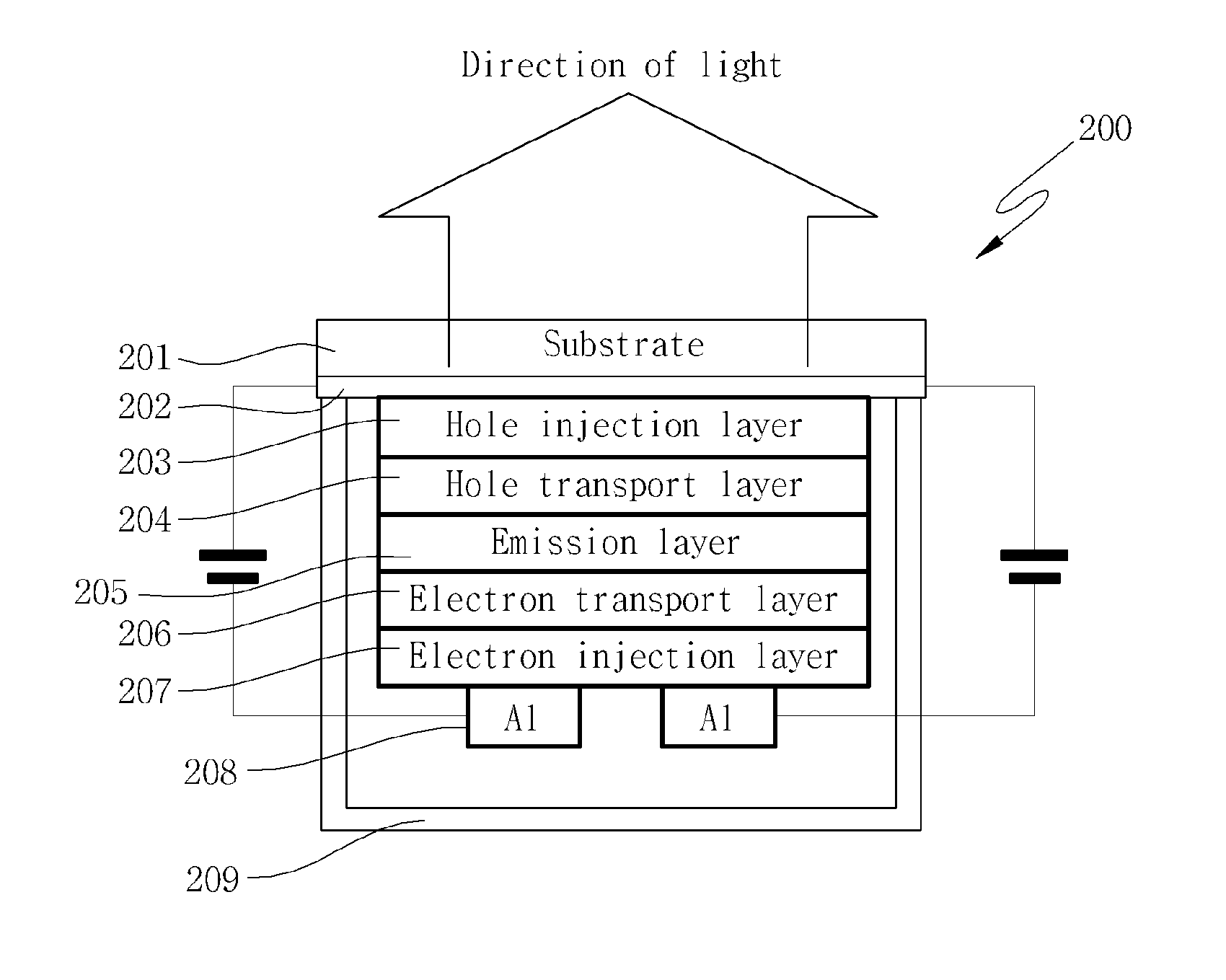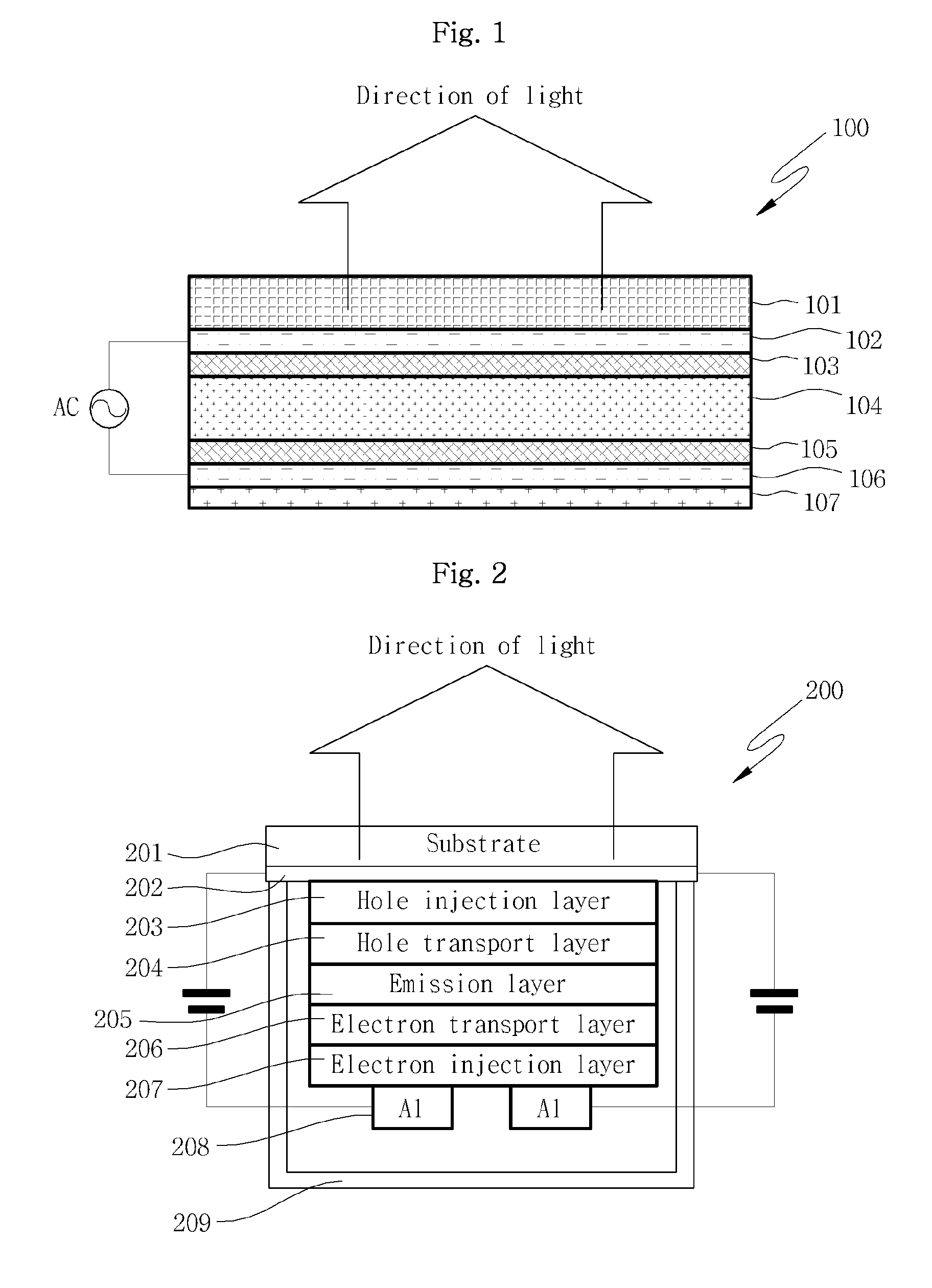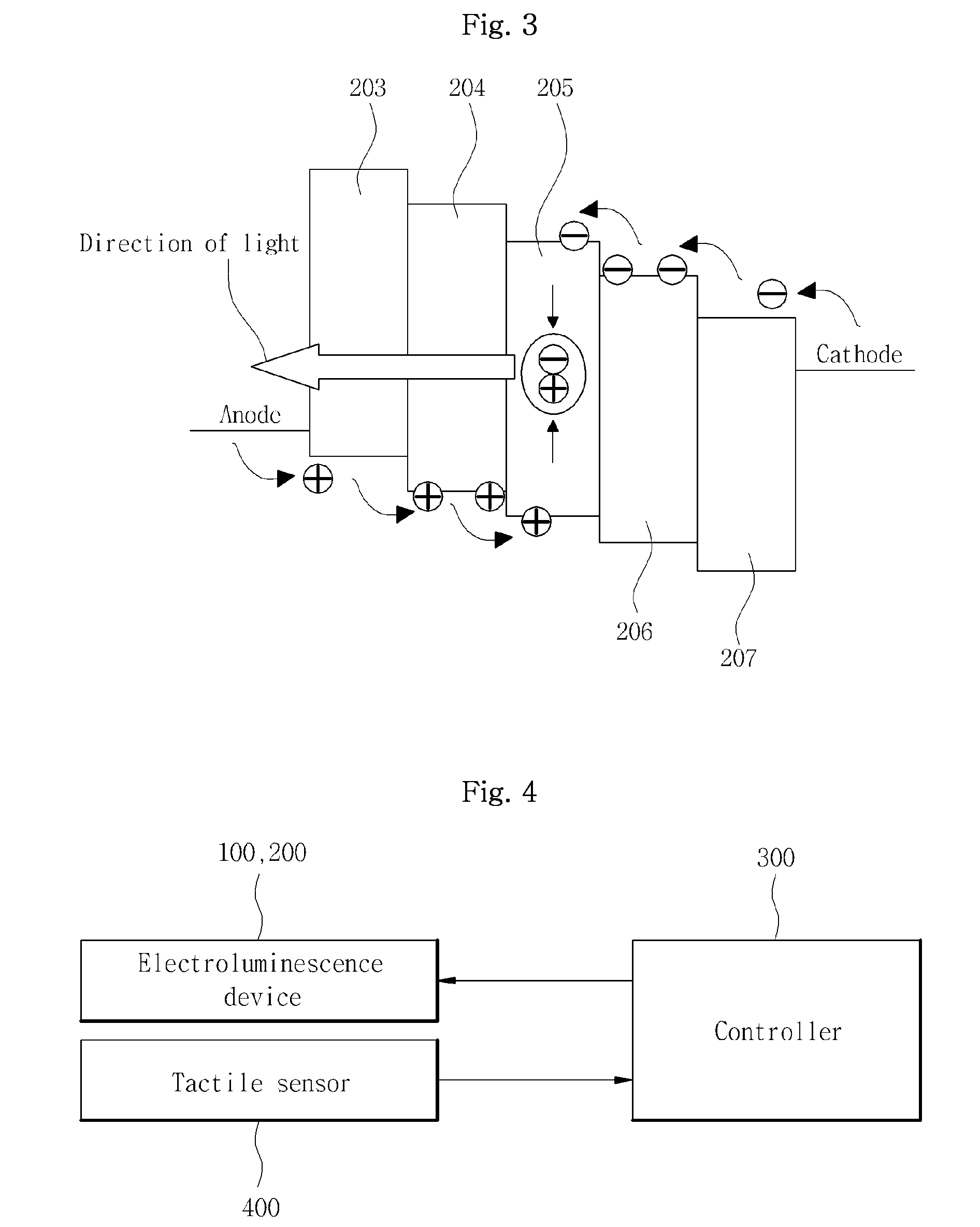Brightness controllable electroluminescence device with tactile sensor sensing intensity of force or intensity of pressure, flat panel display having the same, mobile terminal keypad having the same and method of operating the same
a technology of electroluminescence device and brightness control, which is applied in the direction of instruments, telephone set constructions, computing, etc., can solve the problems of inability to continuously adjust brightness and restricted application to a very narrow field, and achieve the effect of saving energy
- Summary
- Abstract
- Description
- Claims
- Application Information
AI Technical Summary
Benefits of technology
Problems solved by technology
Method used
Image
Examples
embodiments
[0052]FIG. 4 is a block diagram of a brightness controllable electroluminescence device according to the present invention. The brightness controllable electroluminescence device includes an inorganic / organic electroluminescence device 100 or 200, a tactile sensor 400 sensing the intensity of force or the intensity of pressure, and a controller 300 controlling brightness.
[0053]The inorganic / organic electroluminescence device 100 or 200 may be the inorganic electroluminescence device shown in FIG. 1 or the organic electroluminescence device 200 shown in FIG. 2. In addition, the inorganic / organic electroluminescence device 100 or 200 may be selected from various electroluminescence devices as described above. In all the electroluminescence devices, the quantity of flowing electrons is determined by the intensity of electric field and the extent of emission (brightness) can be changed according to the quantity of flowing electrons.
[0054]The tactile sensor 400 can sense the intensity of...
application examples
[0061]FIG. 8 is a perspective view of a slim cellular phone using a conventional organic electroluminescence device as a keypad lighting device and FIG. 9 is an exploded perspective view of a cellular phone having an organic or inorganic electroluminescence device with the sheet type tactile sensor 400 according to the present invention, which is attached to a keypad of the cellular phone. The cellular phone shown in FIG. 8 has a predetermined brightness irrespective of the intensity of touching force applied to the keypad. In the cellular phone to which the present invention is applied, shown in FIG. 9, touching force or pressure applied to the cellular phone is transferred to the inorganic or organic electroluminescence device 100 or 200 and the tactile sensor 400 located under a keypad cover 2, and thus the brightness can be controlled.
[0062]FIG. 10 is a perspective view showing an organic or inorganic electroluminescence device to which a tactile sensor 510 in the form of a shee...
PUM
 Login to View More
Login to View More Abstract
Description
Claims
Application Information
 Login to View More
Login to View More - R&D
- Intellectual Property
- Life Sciences
- Materials
- Tech Scout
- Unparalleled Data Quality
- Higher Quality Content
- 60% Fewer Hallucinations
Browse by: Latest US Patents, China's latest patents, Technical Efficacy Thesaurus, Application Domain, Technology Topic, Popular Technical Reports.
© 2025 PatSnap. All rights reserved.Legal|Privacy policy|Modern Slavery Act Transparency Statement|Sitemap|About US| Contact US: help@patsnap.com



